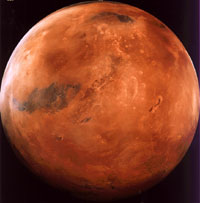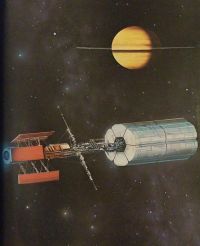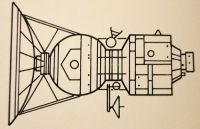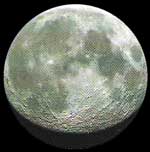Difference between revisions of "2010s (FASA)"
From Trekipedia
m |
m |
||
| Line 13: | Line 13: | ||
==2012== | ==2012== | ||
| − | [[File:mars-stsc.jpg|200px|thumb| | + | [[File:mars-stsc.jpg|200px|thumb|left|[[Mars#FASA_Timeline|Mars]] ([[Star Trek: Star Charts (Book)|STSC]])]] |
* RSD 0/1200: Marsbase 1, the first interplanetary outpost, begins the first thorough search for life, past or present, on [[Mars#FASA_Timeline|Mars]], among other scientific objectives. Director Mark Glynn leads a crew of fifteen scientists.<ref name="SFC"/><ref name="FASA2011"/> | * RSD 0/1200: Marsbase 1, the first interplanetary outpost, begins the first thorough search for life, past or present, on [[Mars#FASA_Timeline|Mars]], among other scientific objectives. Director Mark Glynn leads a crew of fifteen scientists.<ref name="SFC"/><ref name="FASA2011"/> | ||
| Line 20: | Line 20: | ||
==2014== | ==2014== | ||
| − | [[File:aventeur_class-sfc.jpg|200px|thumb| | + | [[File:aventeur_class-sfc.jpg|200px|thumb|right|[[Aventeur class#FASA Timeline|''Aventeur'' class]] ([[Star Trek: Spaceflight Chronology (Book)|SFC]])]] |
* RSD 0/1400: The [[Space Homesteading Act]] affords enterprising pioneers the opportunity to acquire property in the [[Sol System|Solar System]]. From the beginning, the Act proves to be popular and workable.<ref name="SFC"/> | * RSD 0/1400: The [[Space Homesteading Act]] affords enterprising pioneers the opportunity to acquire property in the [[Sol System|Solar System]]. From the beginning, the Act proves to be popular and workable.<ref name="SFC"/> | ||
* RSD 0/1400: The first manned [[Jupiter]] mission aboard the [[Aventeur class|''Aventeur''-class]] [[U.N.S.S. Lewis and Clark|U.N.S.S. ''Lewis and Clark'']] under [[U.S. Air Force Ranks#Colonel|Colonel]] [[Christopher, Shaun Geoffrey|Shaun Geoffrey Christopher]] departs on [[Humans|humanity]]'s farthest journey from [[Earth#FASA_Timeline|Earth]].<ref name="SFC"/> | * RSD 0/1400: The first manned [[Jupiter]] mission aboard the [[Aventeur class|''Aventeur''-class]] [[U.N.S.S. Lewis and Clark|U.N.S.S. ''Lewis and Clark'']] under [[U.S. Air Force Ranks#Colonel|Colonel]] [[Christopher, Shaun Geoffrey|Shaun Geoffrey Christopher]] departs on [[Humans|humanity]]'s farthest journey from [[Earth#FASA_Timeline|Earth]].<ref name="SFC"/> | ||
| Line 48: | Line 48: | ||
* RSD 0/1900: The [[DY-100 class#FASA_Timeline|DY-100 class]] undergoes extensive design and performance upgrades to become the [[DY-500 class#FASA_Timeline|DY-500 class]]. DY-500 vessels include the [[U.N.S.S. Wheeler (DY-500)|U.N.S.S. ''Wheeler'']] and the [[U.N.S.S. Courageous (DY-500)|U.N.S.S. ''Courageous'']].<ref name="SFC"/> | * RSD 0/1900: The [[DY-100 class#FASA_Timeline|DY-100 class]] undergoes extensive design and performance upgrades to become the [[DY-500 class#FASA_Timeline|DY-500 class]]. DY-500 vessels include the [[U.N.S.S. Wheeler (DY-500)|U.N.S.S. ''Wheeler'']] and the [[U.N.S.S. Courageous (DY-500)|U.N.S.S. ''Courageous'']].<ref name="SFC"/> | ||
===July=== | ===July=== | ||
| − | [[File:moon-stsc.jpg|200px|thumb| | + | [[File:moon-stsc.jpg|200px|thumb|left|[[Moon (Sol IIIa)#FASA_Timeline|Moon]] ([[Star Trek: Star Charts (Book)|STSC]])]] |
* RSD 0/1907.20 (20 July): On the 50th anniversary of the first manned mission to the [[Moon (Sol IIIa)#FASA_Timeline|moon]], all six original [[Apollo program|''Apollo'']] landing sites officially become protected historic landmarks.<ref name="SFC"/> | * RSD 0/1907.20 (20 July): On the 50th anniversary of the first manned mission to the [[Moon (Sol IIIa)#FASA_Timeline|moon]], all six original [[Apollo program|''Apollo'']] landing sites officially become protected historic landmarks.<ref name="SFC"/> | ||
Revision as of 06:10, 12 April 2019
Reference Stardate 0/1001 through 0/1912
2010
- RSD 0/1000: The first Earth/Space census by the United Nations shows 1500 people living off-world, and estimates as many as 7500 could be living in space by 2020.[1]
- RSD 0/1000: Solar power now accounts for 40% of US energy use. A worldwide accelerated solar power satellite program will be completed within a decade.[1]
2012
- RSD 0/1200: Marsbase 1, the first interplanetary outpost, begins the first thorough search for life, past or present, on Mars, among other scientific objectives. Director Mark Glynn leads a crew of fifteen scientists.[1][2]
2013
- RSD 0/1300: The DY-300, the successor to the DY-100, undergoes prototype testing. The design has some serious flaws that prevent it from entering service.[1]
2014
- RSD 0/1400: The Space Homesteading Act affords enterprising pioneers the opportunity to acquire property in the Solar System. From the beginning, the Act proves to be popular and workable.[1]
- RSD 0/1400: The first manned Jupiter mission aboard the Aventeur-class U.N.S.S. Lewis and Clark under Colonel Shaun Geoffrey Christopher departs on humanity's farthest journey from Earth.[1]
October
- RSD 0/1410.21 (21 October): An Orion freebooter encounters the Romulan fleet detroying the colony at Farx and flees under fire.[3][4]
November
- RSD 0/1411 through 0/1612 (November 2014 through December 2016): The Orions evacuate eleven worlds in the immediate vicinity of Romulan space. While their populations embark on giant colony vessels, two of these worlds are assaulted and the loss of life is heavy. The attackers never acknowledge any communication or pay any attention to offers of ransom.[4]
2015
- RSD 0/1500: Marsbase 2 expands the search for extraterrestrial life.[1]
- RSD 0/1500: The first interstellar probes, the Stellar Series, are launched toward nearby stars. The series ends in 2022.[1][2]
- RSD 0/1500: The Lindbergh class space ferry is retired from service.[1]
2017
- RSD 0/1700: The Stellar Series probe U Thant, which utilized advanced artificial intelligence technology due to its extreme range from contact with Earth, reports large amounts of antimatter in the interstellar void just 120.4 AUs beyond Pluto. The startling discovery subsequently changes the course of spaceflight technology.[1]
2018
- RSD 0/1800: Marsbase 3 begins an in-depth study on the mining of materials from Phobos and Deimos.[1]
- RSD 0/1800: The first homesteaders begin leaving for the asteroid belt.[1]
November
- RSD 0/1811.15 (15 November): The United Nations charters the Terran Intelligence Agency, which replaces all national and territorial intelligence-gathering services. The new agency's primary task is to ensure the security of the United Nations' government. To do so, agents operate throughout the Sol system.[5]
2019
- RSD 0/1900: On Phobos, the larger Martian moon, a temporary base is set up as the first mining activity begins.[1]
- RSD 0/1900: The DY-100 class undergoes extensive design and performance upgrades to become the DY-500 class. DY-500 vessels include the U.N.S.S. Wheeler and the U.N.S.S. Courageous.[1]
July
- RSD 0/1907.20 (20 July): On the 50th anniversary of the first manned mission to the moon, all six original Apollo landing sites officially become protected historic landmarks.[1]
References
- ↑ 1.00 1.01 1.02 1.03 1.04 1.05 1.06 1.07 1.08 1.09 1.10 1.11 1.12 1.13 1.14 Goldstein, Stan and Goldstein, Fred with Sternbach, Rick. Star Trek: Spaceflight Chronology. Pocket Books, 1980.
- ↑ 2.0 2.1 Menke, Bernard Edward and Stuart, Rick David. "The Federation." Star Trek: The Role Playing Game, Supplement 2011. FASA Corporation. 1986.
- ↑ Rogan, Peter R. "The Orions: The Book of Common Knowldedge." Star Trek: The Role Playing Game, Supplement 2008A. FASA Corporation. 1987.
- ↑ 4.0 4.1 Rogan, Peter R. "The Orions: The Book of Deep Knowldedge." Star Trek: The Role Playing Game, Supplement 2008B. FASA Corporation. 1987.
- ↑ Theisen, John A. "Star Fleet Intelligence Manual: Agent's Orientation Manual." Star Trek: The Role Playing Game, Supplement 2014B. FASA Corporation. 1987.




